SEO Checklist - 49 Tips to Optimize Your Website in 2024
- Published on
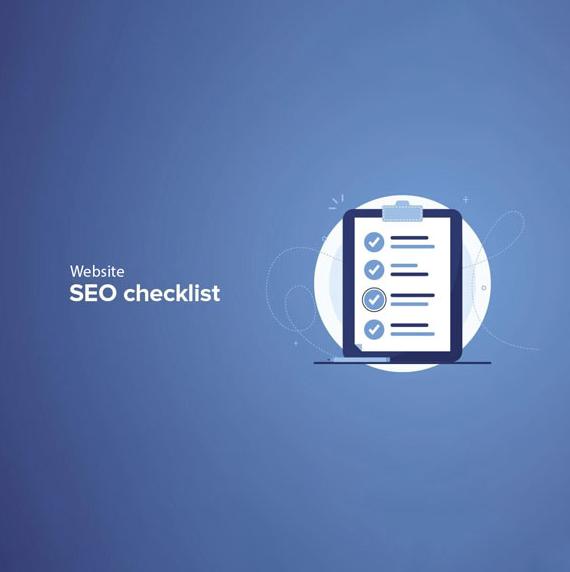
- Purpose of the SEO Checklist
- Basic SEO Checklist
- Set up Google Search Console
- Set up Bing Webmaster Tools
- Set up Yoast SEO (or a similar SEO Plugin)
- Create and submit an XML Sitemap
- Set up Google Analytics
- Keyword Research Checklist
- Research Competitor Keywords
- Find Primary Keywords
- Research Long-Tail Keywords
- Assess Search Intent
- Use Question Keywords
- On-Page SEO Checklist
- Optimize Title Tag
- Optimize Meta Description
- Check H1 Tag
- Optimize SEO-friendly URL
- Use Keywords in the First 150 Words
- Use Keywords in Heading Tags
- Optimize Images
- Use Synonyms for Keywords
- Use External Links
- Use Internal Links
- Technical SEO Checklist
- Page Load Speed
- Ensure Mobile-Friendliness
- Use HTTPS
- Optimize robots.txt
- Check for Crawl Errors
- Optimize structured data (schema)
- Regularly Check Page Speed
- Content Checklist
- Write Unique and Useful Content
- Use the Skyscraper Technique to Create Content
- Use Natural Keywords
- Leverage Depth of Content
- Ensure Readable Content
- Use Schema Markup to Optimize Content
- Internal Linking
- Update Old Content
- Develop a Suitable Content Writing Formula
- Off-Page SEO Checklist
- Build Quality Backlinks
- Leverage Guest Posting
- Share on Social Media
- Engage with Communities
- Monitor and Remove Bad Links
- Build Your Brand on Reputable Platforms
- Combine with Other Marketing Strategies
- Advanced SEO Tactics You Need to Know
- Use Click-Through Rate (CTR) to Optimize Pages
- Minimize Website Downtime
- Remove Low-Quality Content
- Improve Time on Page
- Update Outdated Content
- Leverage Schema Markup to Optimize Content
SEO plays a crucial role in building and optimizing a website. However, with the constant changes to Google's algorithms, keeping up with new standards can be challenging. Therefore, having a detailed SEO checklist will make it easier for you to adjust and ensure the effectiveness of your website’s SEO. Let’s join RiverLee Web Design to explore 49 SEO checklist tips to help you optimize and improve your website’s ranking today!
Purpose of the SEO Checklist
An SEO Checklist helps you systematically check each step to optimize your time and ensure your website SEO plan is always up-to-date with new improvements. This contributes to increasing organic traffic and improving your website's ranking on search engines.
Following the SEO Checklist regularly allows businesses to promptly address any issues from Google notifications or data from SEO tools. This enables businesses to update their SEO KPIs and apply more effective optimization measures for their website’s SEO process.
Basic SEO Checklist
Set up Google Search Console
Google Search Console is an essential tool that any webmaster needs to monitor and optimize website SEO performance. To set up and use Google Search Console effectively, follow these steps:
- Verify website ownership: There are several ways to verify ownership, such as uploading an HTML file, adding a meta tag to the site’s source code, or verifying through the domain provider. Refer to the detailed guide on verifying your website in Google Search Console for more information.
- Monitor performance metrics: Use Google Search Console to track metrics like Core Web Vitals, total impressions, CTR (Click-Through Rate), and average position. These metrics help you gauge user engagement and content effectiveness.
- Detect and fix crawl errors: Crawling errors can affect Google’s indexing capabilities. Use the Coverage report to view pages with errors and get suggestions on how to fix them.
- Enhance user experience: Use the Core Web Vitals report to check factors such as Largest Contentful Paint (LCP), First Input Delay (FID), and Cumulative Layout Shift (CLS) to improve page load speed and stability.
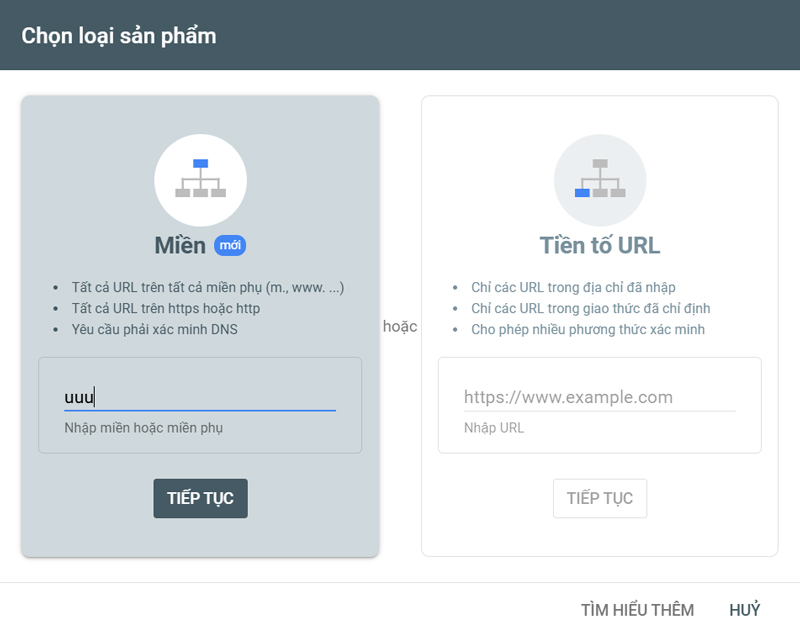
Set up Bing Webmaster Tools
While Google dominates the search engine market, Bing also has a significant share, especially in certain regions. Bing Webmaster Tools provides powerful tools to help you analyze and optimize your website:
- Register and verify ownership: Registration and verification steps are similar to Google Search Console. This ensures you can access detailed reports and insights related to website performance.
- Use the built-in SEO tool: Bing Webmaster Tools provides tools to check on-page SEO and suggest improvements. This tool is particularly useful for analyzing page load speed and mobile compatibility.
- Monitor detailed reports: Reports in Bing Webmaster Tools help you understand how Bing and other search engines index and display your website in search results.
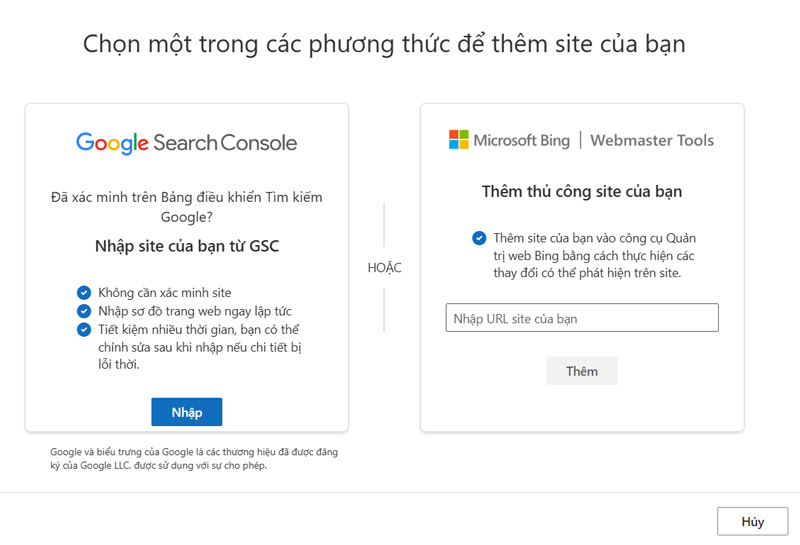
Set up Yoast SEO (or a similar SEO Plugin)
Using Yoast SEO on WordPress is an effective way to optimize content and perform on-page SEO:
- Keyword analysis: Yoast SEO allows you to add a main keyword and analyze its presence in the content. This helps you ensure the keyword is naturally distributed without being overused.
- Optimize title tags and meta descriptions: Yoast SEO provides a tool to preview how the title and description will appear in search results and prompts you to edit for maximum effectiveness. Refer to how to write compelling meta descriptions.
- Readability analysis: The plugin evaluates your content based on sentence length, paragraph structure, and other factors to suggest improvements for readability. This is important for retaining readers and reducing bounce rates.
- Create SEO-friendly URL structures: Yoast SEO helps you set and optimize short, readable, and SEO-friendly URLs. Read more in the guide to creating SEO-friendly URLs.
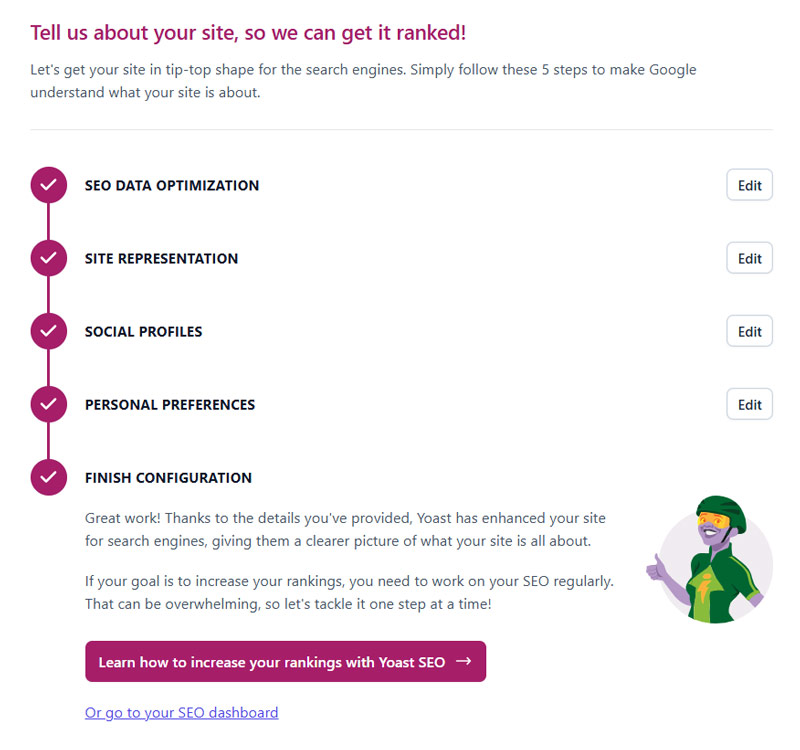
Create and submit an XML Sitemap
An XML Sitemap is an XML file listing all pages on your website, helping search engines understand the structure and content of your site:
- Automatically create a sitemap: Use plugins like Yoast SEO or other tools to easily create an XML Sitemap. Refer to the detailed guide on creating an XML Sitemap for more information.
- Submit the sitemap to search engines: Once you create the XML Sitemap, submit it to Google Search Console and Bing Webmaster Tools to ensure all pages are fully indexed.
- Regularly update: Ensure the sitemap is updated when new content is added, so search engines can quickly locate and index new pages.
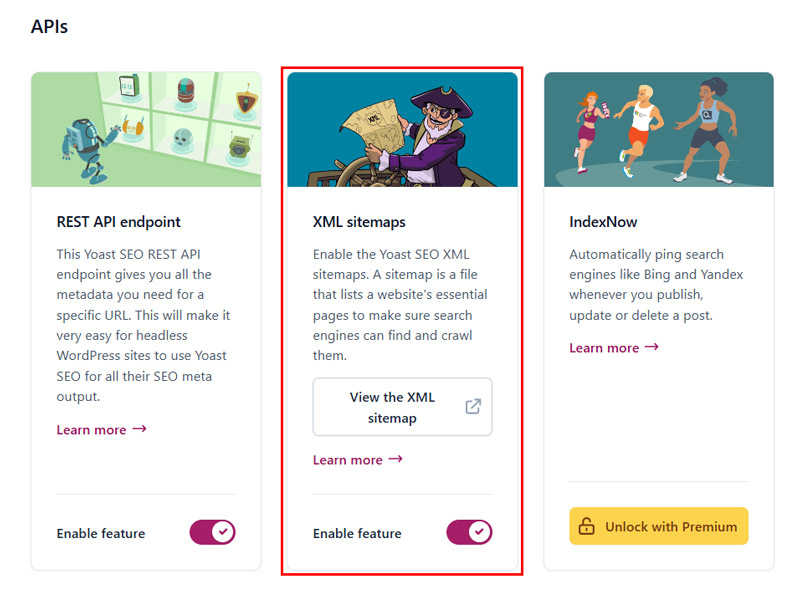
Set up Google Analytics
Google Analytics is an indispensable tool to track user behavior on your website:
- Install the tracking code: Sign up for a Google Analytics account and install the tracking code on your website. For installation steps, see the guide to setting up Google Analytics.
- Connect with Google Search Console: Link the two tools for a comprehensive view of performance and top search keywords.
- Analyze detailed data: Track metrics like bounce rate, time on page, and user behavior to optimize content and improve user experience.
- Set goals: To measure the effectiveness of campaigns and specific activities on the website, set goals like form completion rates, order volumes, etc.
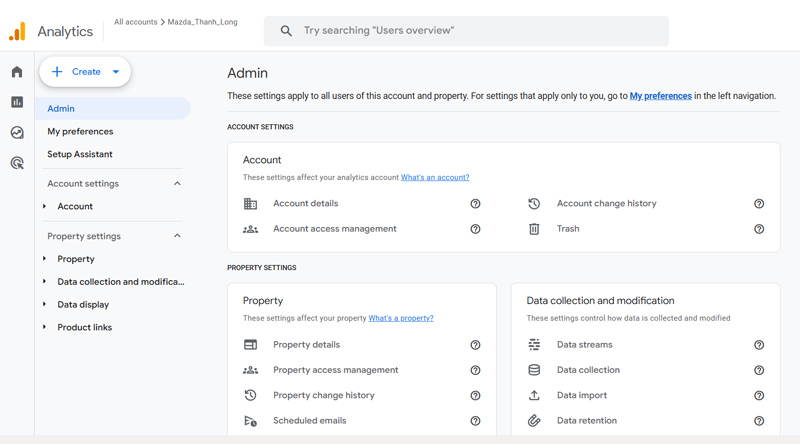
Note: Completing all the steps in this basic checklist is necessary to build a solid SEO foundation, thereby increasing overall SEO effectiveness and achieving high rankings on search engines.
Keyword Research Checklist
Research Competitor Keywords
Researching the keywords competitors use is essential to understand their SEO strategies and identify new optimization opportunities. To do this, you need:
- Use competitor keyword analysis tools: Tools like Ahrefs, SEMrush, and Moz help you find the keywords your competitors are ranking for..
- Analyze top-ranking pages: Look at content on top-ranking pages to identify primary and secondary keywords your competitors are optimizing.
- Take notes and compare: Create a list of essential competitor keywords and compare them with the keywords you’re targeting to identify gaps and new opportunities.
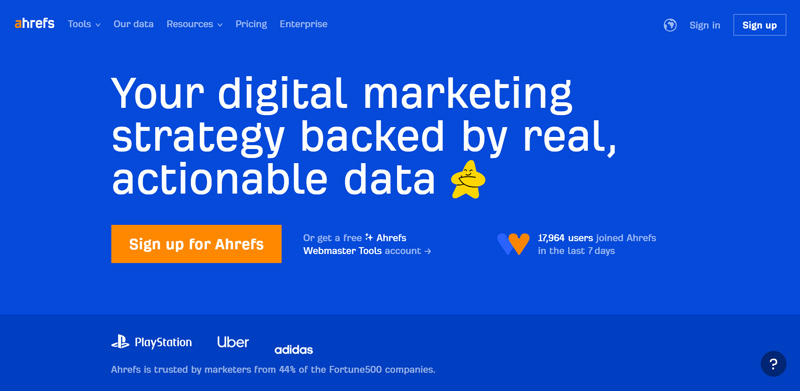
Find Primary Keywords
Primary keywords are crucial in shaping your content and SEO strategy. To choose primary keywords effectively, follow these steps:
- Use keyword research tools: Tools like Google Keyword Planner, Ahrefs, or Ubersuggest provide insights into search volume, competition level, and keyword trends.
- Focus on search intent: Select keywords that not only have high search volume but also match the user’s Search Intent.
- Analyze long-tail keywords: Long-tail keywords typically have lower competition and target specific user needs. Check out the detailed guide to researching keywords.
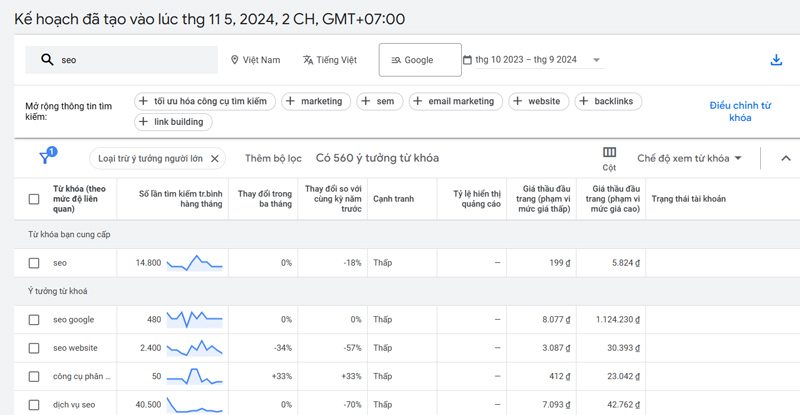
Research Long-Tail Keywords
Long-tail keywords help you reach a specific audience and make ranking easier:
- Use keyword idea tools: Tools like AnswerThePublic and Keyword Tool help you find commonly searched questions and long-tail phrases.
- Incorporate long-tail keywords naturally: Ensure these keywords are used naturally in titles, body text, and H2/H3 tags.
Assess Search Intent
Understanding user search intent helps you tailor content accordingly:
- Classify search intent: Analyze whether users are searching to gain information (informational intent), take action (transactional intent), or find a specific page (navigational intent).
- Analyze SERP: Check the search results for the keyword to understand the type of content Google is prioritizing (guides, videos, products, etc.).
Use Question Keywords
Question keywords help you create content that’s friendly to Featured Snippets:
- Find popular question keywords: Use People Also Ask on Google and tools like AnswerThePublic to find questions related to the primary keyword.
- Create concise, accurate responses: Ensure answers are clear and meet user needs, increasing the chances of appearing in quick answer boxes. Read more on how to optimize content for Featured Snippets.
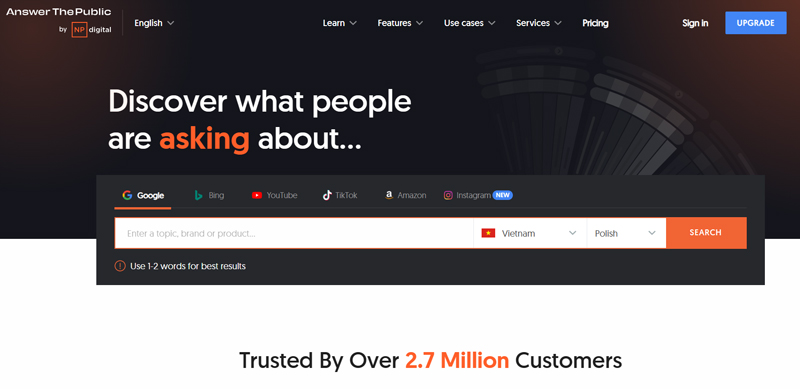
Note: Conducting accurate and thorough keyword research is the first and most crucial step in creating effective SEO content, helping you attract the right target audience and increasing your chances of ranking high on search engines.
On-Page SEO Checklist
Optimize Title Tag
The title tag is the most critical factor in on-page SEO optimization. To optimize the Title tag, pay attention to:
- Ideal length: Ensure the Title tag is 50-60 characters long to avoid truncation in search results (SERP). See detailed guidance on title tag optimization.
- Include primary keyword: Place the primary keyword near the beginning of the Title tag to emphasize relevance.
- Create an appealing title: The title should be attractive and engaging to increase click-through rate (CTR).
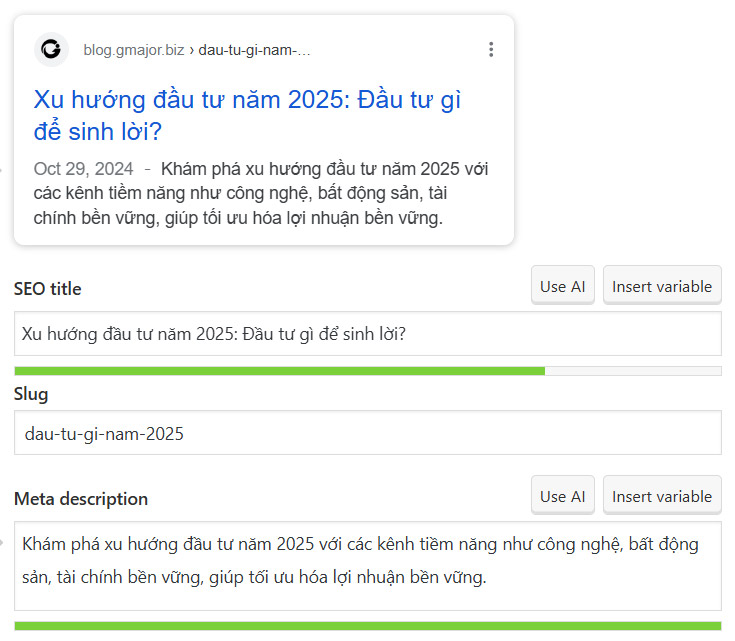
Optimize Meta Description
Meta Description helps improve CTR by providing a compelling summary of the page content:
- Optimal length: Keep the description around 150-160 characters to ensure full display in SERP.
- Include secondary keywords: Integrate secondary keywords naturally to highlight content relevance.
- Use call-to-action: Use action-oriented language such as "learn more" or "view now" to encourage clicks.
Check H1 Tag
The H1 tag is the page's main title and plays an important role in conveying the main content to search engines and readers:
- Use only one H1 tag: Ensure there is only one H1 tag on each page to avoid content confusion.
- Include primary keyword: Integrate the primary keyword in H1 to enhance SEO.
- Be concise and descriptive: The H1 tag should be concise and accurately describe the page content.
Optimize SEO-friendly URL
Optimizing URLs makes your website more user- and search engine-friendly:
- Use primary keyword in URL: Adding keywords to the URL will help your website rank higher in search results and increase content relevance. Google will better understand your page and enhance visibility.
- Short and memorable URL: Short URLs are not only easier to remember but also easier to share, which helps with faster page loading and increased user-friendliness.
Use Keywords in the First 150 Words
Including the primary keyword in the first 150 words of the article helps search engines quickly understand the main content and increases visibility on search result pages. This factor is crucial in helping the article rank higher on Google.
Use Keywords in Heading Tags
Using keywords in Heading tags helps search engines understand the page structure and main topics:
- Integrate primary and related keywords: Besides the primary keyword, include related keywords in H2, H3 tags to clarify content structure without keyword stuffing.
- Enhance readability: Headings make content more readable and clearly separate sections in the article.
Optimize Images
Optimizing images on your website not only improves page load speed but also boosts overall SEO:
- Reduce image size: Use tools like TinyPNG or ImageOptim to reduce file size without sacrificing image quality.
- Use keyword-rich file names: Name image files with keywords to support search.
- Add alt text: Add the primary keyword in the alt text attribute to describe the image content for search engines. See how to optimize alt text.
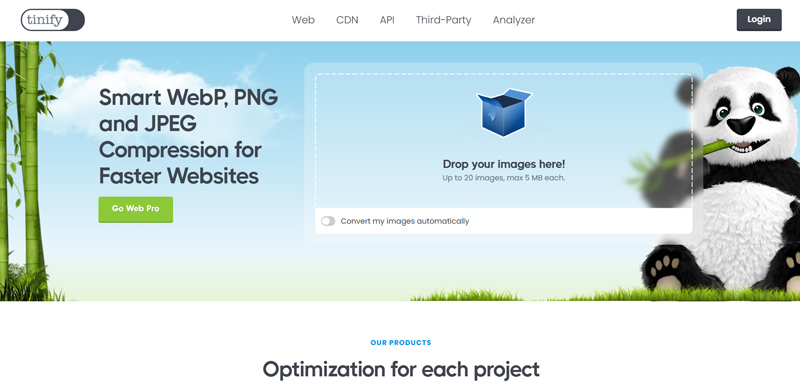
Learn more about SEO image optimization to rank on Google here.
Use Synonyms for Keywords
Using keyword synonyms and variations enriches content and avoids keyword repetition:
- Enhance context: Synonyms make the content more readable and natural, avoiding keyword stuffing.
- Avoid overuse: Avoid using too many synonyms or variations to keep the content understandable.
Use External Links
Linking to reputable websites will help increase the credibility and ranking of your website:
- Choose relevant and reputable sites: Ensure links point to quality sites relevant to the article.
- Use moderately: Use external links sparingly to keep readers focused.
Use Internal Links
Internal links help readers discover related content and increase time spent on the page:
- Strengthen links: Add internal links to related articles to support navigation.
- Improve ranking: Proper use of internal links helps Google understand your website structure and improves ranking. See more on how to use internal links effectively.
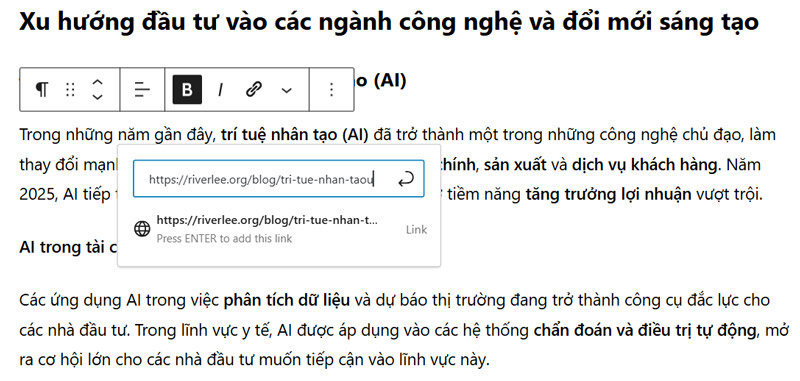
Note: Fully and thoroughly performing on-page SEO optimization steps helps improve ranking and user experience, thereby enhancing the overall quality of the website.
Technical SEO Checklist
Page Load Speed
Page load speed is an important factor in Technical SEO, directly impacting user experience and search engine ranking:
- Use speed testing tools: Use tools like Google PageSpeed Insights, GTmetrix, and WebPageTest to check page load performance. These tools provide detailed information on factors slowing down the speed and suggest ways to improve it.
- Minimize image file size: Optimize images by using WebP format and compression tools like TinyPNG.
- Optimize source code: Minimize HTML, CSS, and JavaScript using tools like Minify to reduce load time.
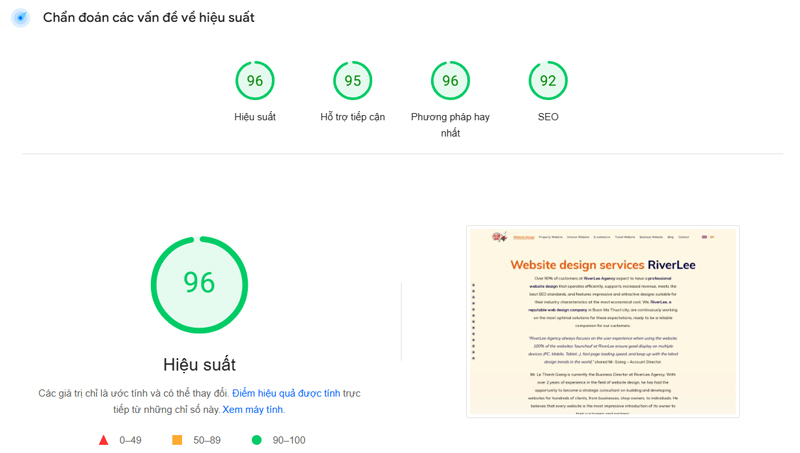
Ensure Mobile-Friendliness
Google uses Mobile-First Indexing, meaning mobile performance is prioritized. To ensure your website is mobile-friendly, you need to:
- Use responsive design: Ensure the website automatically adjusts its layout according to different screen sizes.
- Run a mobile-friendly test: Use the Mobile-Friendly Test tool to check and get improvement suggestions.
- Optimize button size and placement: Ensure buttons are easy to use on small screens to enhance user experience.
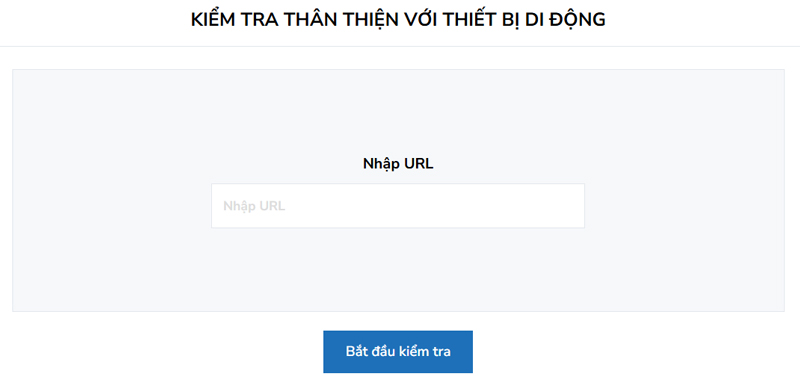
Use HTTPS
HTTPS not only helps secure user information but is also a ranking factor favored by Google:
- Install an SSL certificate: Use an SSL certificate from trusted providers like Let’s Encrypt or Cloudflare to protect data.
- Check for insecure links: Ensure all links on the site use HTTPS instead of HTTP to avoid security warnings.
- Redirect 301 from HTTP to HTTPS: Perform a 301 redirect to retain SEO value when moving from HTTP to HTTPS.
Optimize robots.txt
Robots.txt is a file used to instruct search engines on which pages should or should not be indexed:
- Properly configure robots.txt file: Ensure that important pages are not blocked in robots.txt. See the guide to configuring robots.txt.
- Check crawl status: Use Google Search Console to check pages that may be blocked or have crawl errors.
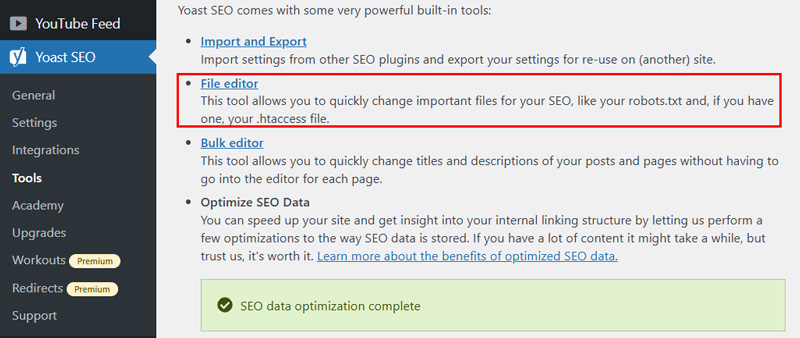
Check for Crawl Errors
Crawl errors can prevent search engines from indexing your website, affecting visibility in search results:
- Use the Coverage report in Google Search Console: Check this report to identify crawl errors and get suggestions for fixes.
- Fix 404 errors and redirects: Redirect 404 error pages to related pages or the homepage to avoid losing traffic. See the guide to fixing 404 errors.
- Check HTTP status: Ensure pages return valid HTTP status codes (200 OK) and avoid 500 or other errors.
Optimize structured data (schema)
Adding structured data helps search engines better understand page content and display more detailed information on SERP:
- Use a schema testing tool: Use tools like Google Structured Data Testing Tool to verify and validate structured data.
- Apply relevant schema: Add schema types like Article, Product, Breadcrumb to improve visibility on search results.
- Regularly update schema: Ensure schema data is updated according to the latest standards.
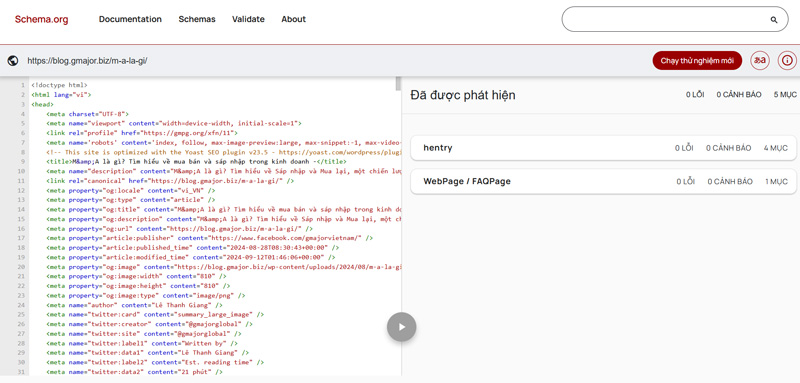
Regularly Check Page Speed
Regularly checking page speed ensures that no issues arise:
- Monitor Core Web Vitals metrics: Check metrics like LCP, FID, and CLS to ensure the website meets Google standards.
- Optimize preloaded resources: Use preload and prefetch to speed up loading for critical resources.
Note: The Technical SEO checklist helps improve crawlability, indexing, and display of your website, while also enhancing user experience to achieve the best SEO results.
Content Checklist
Write Unique and Useful Content
Content is the most crucial element in attracting readers and optimizing SEO. To ensure content is valuable and unique, you need to:
- Thoroughly research: Deeply explore the topic before writing to ensure accurate and useful information.
- Create original content: Avoid copying or reusing content from other sources to avoid copyright violations and Google penalties.
- Deliver real value: Provide information that addresses specific problems readers are concerned about.
Use the Skyscraper Technique to Create Content
The Skyscraper Technique is a powerful method for creating more engaging content by:
- Finding existing content: Identify top articles on the topic you want to write about.
- Improve and expand: Add more detailed information, update data, and attractive elements like images and charts to make your content better.
- Promote content: Reach out to sites that linked to the original article to introduce your upgraded version.
Use Natural Keywords
Keywords need to be used naturally and appropriately to maintain the coherence of the content:
- Distribute keywords evenly: Place primary keywords in important places like titles, introduction, heading tags, and conclusions.
- Avoid keyword stuffing: Do not overuse the main keyword to avoid being flagged by Google as spam.
- Use synonyms and related keywords: Enrich content and increase ranking potential for keyword variations.
Leverage Depth of Content
To create high-quality content, it’s essential to go deep into the topic:
- Dive into the topic: Don’t just focus on the primary keyword; expand to related aspects to enrich the content.
- Add explanations: Use examples, statistics, and analyses to clarify main points.
- Create comprehensive content: Ensure that your article is a reliable source that readers can refer to for all aspects of the topic.
Ensure Readable Content
Readable content helps retain users longer on the site, improving SEO metrics:
- Break down paragraphs: Each paragraph should have 2-3 sentences to keep the content readable.
- Use simple language: Avoid excessive technical jargon unless necessary.
- Logical segmentation: Organize content into easily followable sections, with clear headings to separate topics.
Use Schema Markup to Optimize Content
Schema Markup helps search engines better understand page content:
- Add schema to content: Use schema types like Article, FAQ, or Review to optimize visibility in search results.
- Verify schema structure: Use Google's Structured Data Testing Tool to ensure the schema has no errors.
- Increase chances of appearing with rich snippets: Make your article stand out in search results with rich snippets.

Internal Linking
Internal linking not only helps readers find related content but also enhances Google’s crawlability and indexing:
- Use internal links effectively: Place links to related articles to strengthen connections on the page.
- Descriptive anchor text: Use clear anchor text so readers understand the content being linked.
- Link to important pages: Ensure that high SEO-value pages are properly internally linked to boost SEO strength.
Update Old Content
Updating content keeps articles fresh and relevant to current SEO standards:
- Regularly review and update: Review old articles at least once a year to add new information and update data.
- Add links and revise information: Update links and add details to increase article value.
- Enhance article structure: Rearrange sections and add subheadings if needed to improve readability.
Develop a Suitable Content Writing Formula
Applying a content writing formula increases effectiveness and engages readers:
- Write for the target audience: Ensure that your content targets the intended audience.
- Analyze competitive keywords: Use tools like Ahrefs and SEMrush for competitive keyword research.
- Shape content value: Write content with the goal of delivering real value to readers.
- Use the AIDA formula: Attention, Interest, Desire, Action helps structure content to attract and retain readers.
Note: Creating quality and optimized content is a critical foundation for building credibility and improving your website’s SEO ranking.
Off-Page SEO Checklist
Build Quality Backlinks
Backlinks are an essential factor in boosting your website’s credibility and ranking. To build effective backlinks, you need to:
- Focus on quality over quantity: A backlink from a reputable, relevant website will have far more value than multiple backlinks from untrustworthy sites.
- Use guest posting method: Write for other blogs and websites in your field to gain backlinks and enhance brand visibility.
- Reach out for partnerships: Build relationships with reputable sites to exchange backlinks and expand your link network.
Leverage Guest Posting
Guest posting is a popular way to build backlinks and improve credibility:
- Choose reputable sites: Make sure to select sites with a good reputation, relevant content, and high traffic.
- Provide valuable content: Write unique, helpful content to capture the interest of site administrators and readers.
- Monitor effectiveness: Check backlinks from guest posts to ensure they’re indexed and positively impact your SEO ranking.
Share on Social Media
Sharing content on social media platforms not only increases traffic but also supports natural backlink building:
- Utilize major platforms: Share articles on Facebook, LinkedIn, X, and other social networks to enhance visibility.
- Encourage sharing: Create engaging, highly shareable content so users willingly share it.
- Join online communities: Post articles and participate in discussions in professional groups to increase reach and attract backlinks from reliable sources.
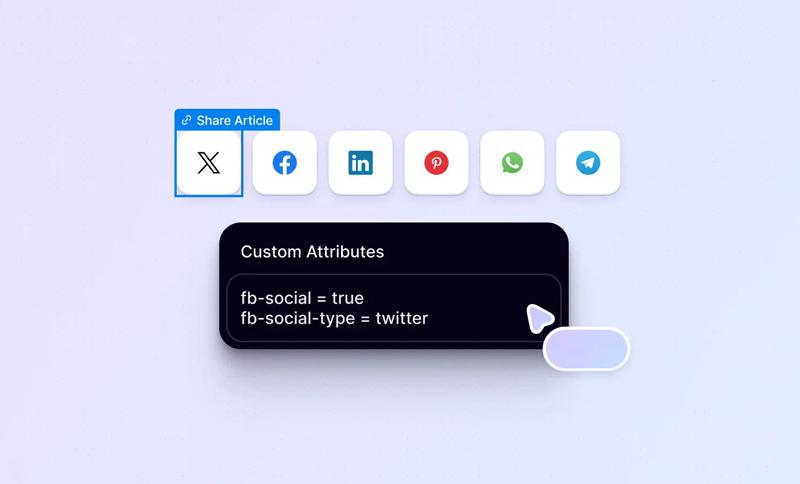
Engage with Communities
Actively engaging in online communities helps build credibility and improve SEO rankings:
- Join forums and blogs: Answer questions and contribute helpful content on forums like Reddit, Quora, and industry blogs.
- Build relationships: Connect with other website owners and contribute valuable content to create opportunities for quality backlink building.
- Become part of the community: Create valuable posts and engage in discussions within communities to increase visibility and trust.
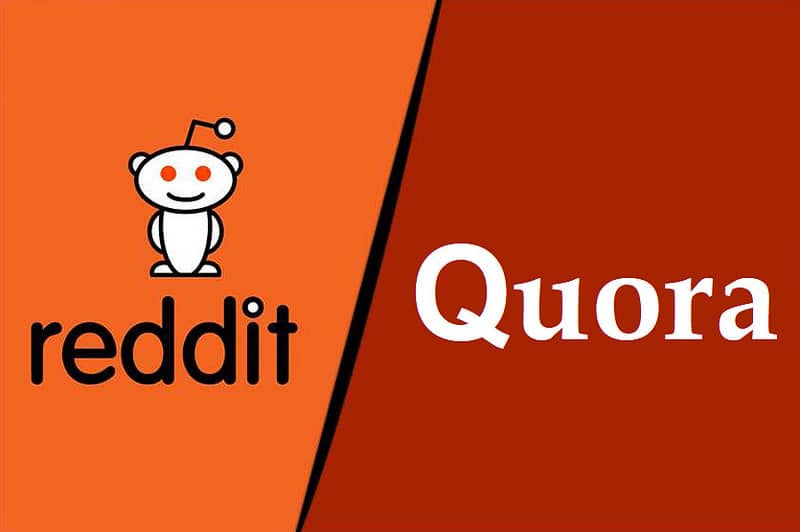
Monitor and Remove Bad Links
Maintaining a robust and trustworthy backlink profile requires monitoring and removing bad links:
- Use a backlink check tool: Use tools like Ahrefs, Moz, or Google Search Console to monitor backlinks and identify unwanted links.
- Disavow bad links: Use Google's Disavow Tool to remove low-quality or spammy links to avoid Google penalties.
- Regularly monitor: Frequently check backlinks to ensure the quality of your link profile remains high.
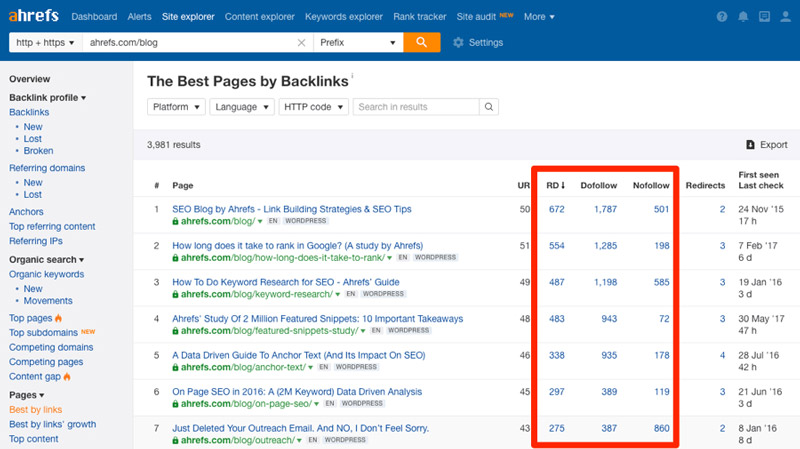
Build Your Brand on Reputable Platforms
Creating a presence on high-profile sites and platforms helps strengthen reputation and brand recognition:
- Post on news sites and magazines: Write for popular industry magazines or news sites to establish credibility and get quality backlinks.
- Use Q&A platforms: Answer questions on platforms like Quora or Stack Exchange with links back to your site to build authority.
Combine with Other Marketing Strategies
Combining off-page SEO with other marketing strategies enhances overall effectiveness:
- Email marketing: Send information about the latest articles to your customer and follower lists to boost sharing and traffic.
- Cross-promotion: Collaborate with other brands or bloggers to promote each other’s content and expand audience reach.

Note: Fully implementing these off-page SEO strategies helps you build a robust link network, improve credibility, and enhance your website’s ranking on search engines.
Advanced SEO Tactics You Need to Know
Use Click-Through Rate (CTR) to Optimize Pages
CTR, or Click-Through Rate, is the ratio between the number of clicks on a link and the number of times it appears on the page. This is an advanced SEO tactic to improve the page’s position on search results and attract more visits. To optimize CTR, you need:
- Optimize title tags and meta descriptions: Ensure titles and descriptions are attractive, contain primary keywords, and offer value to readers.
- Use stimulating language: Add words like "free," "best," "guide" to encourage users to click.
- Monitor CTR performance: Use Google Search Console to analyze CTR of pages and adjust content as needed.
Minimize Website Downtime
Maintaining continuous website uptime is essential in advanced SEO. Downtime can negatively impact ranking and credibility:
- 301 Redirect for removed pages: Ensure deleted pages are redirected to related pages to retain link value.
- Regularly check for broken links: Use tools like Screaming Frog or Ahrefs to identify and fix broken links.
Remove Low-Quality Content
Removing low-quality content is a key part of advanced SEO tactics:
- Periodically review content: Go over and evaluate old articles to identify pages with no value or low performance.
- Delete or merge content: Remove unnecessary pages or combine them with other articles to create stronger and more valuable content.
- Increase consistency: Ensure that the remaining content on the website is quality and aligns with overall SEO goals.
Improve Time on Page
The time users spend on a page is a significant factor in assessing content appeal and usefulness:
- Optimize user experience: Ensure fast page load times and user-friendly layout to prevent early exits.
- Create engaging content: Write in-depth, valuable content to retain readers.
- Add multimedia: Use images, videos, and infographics to increase engagement and enrich content.
Update Outdated Content
Updating old content is an important advanced SEO tactic to stay competitive:
- Add new information: Update content with the latest data and additional information to maintain its value.
- Re-optimize keywords: Review keywords in old articles and adjust if necessary to align with current search trends.
- Update links: Ensure that links within the content are still active and lead to reliable sources.
Leverage Schema Markup to Optimize Content
Schema Markup is a powerful tool to help search engines better understand your content and improve its display on SERP:
- Add relevant schema: Use schema types like Article, FAQ, Review, or Breadcrumb to enhance visibility in search results.
- Validate schema accuracy: Use Google's Rich Results Test to ensure the schema is error-free and effective.
Note: Applying advanced SEO tactics helps optimize the website as a whole, increases visibility, and improves ranking in search engines. Regularly updating and maintaining these elements will ensure your website achieves maximum SEO effectiveness.
Latest Posts

Lesson 26. How to Use break, continue, and return in Java | Learn Java Basics
A guide on how to use break, continue, and return statements in Java to control loops and program execution flow effectively.

Lesson 25. The do-while Loop in Java | Learn Basic Java
A detailed guide on the do-while loop in Java, including syntax, usage, examples, and comparison with the while loop.

Lesson 24. How to Convert Decimal to Binary in Java | Learn Basic Java
A guide on how to convert numbers from the decimal system to the binary system in Java using different methods, with illustrative examples.

Lesson 23. How to Use the While Loop in Java | Learn Java Basics
Learn how to use the while loop in Java with syntax, real-world examples, and practical applications in Java programming.
Related Posts
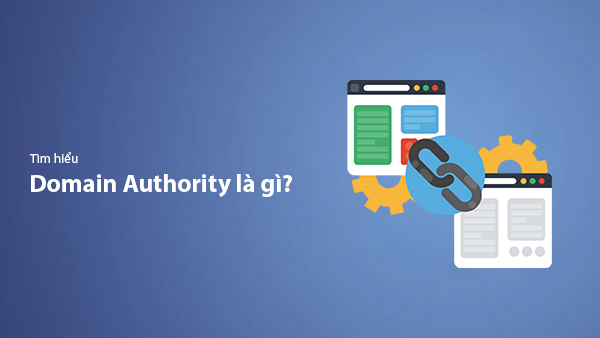
What is Domain Authority? 13-Step Guide to Improve DA Score for Your Website in 2025
Discover what Domain Authority is and its importance in SEO. A detailed guide on the 13-step process to effectively increase DA, from content research and technical optimization to building quality backlinks for a sustainable SEO strategy.
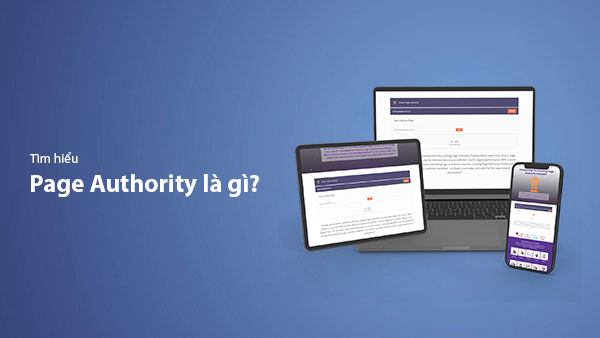
What is Page Authority? The Importance of Page Authority for SEO in 2025
Learn what Page Authority (PA) is and its role in SEO optimization to help improve your website's ranking on search engines in 2025.

What is Google Index? A Guide to 13 Ways to Speed Up Website Indexing in 2025
Discover what Google Index is and learn detailed guidelines on 13 effective ways to get your website indexed quickly and boost your SEO rankings on Google in 2025.
![What is Onpage SEO? 23+ Basic & Advanced Onpage Optimization Checklist [2025]](/blog-posts/seo-onpage/seo-onpage-thumb.jpg)
What is Onpage SEO? 23+ Basic & Advanced Onpage Optimization Checklist [2025]
Learn the concept of Onpage SEO and the 23+ basic to advanced Onpage optimization checklist to improve website quality and boost search rankings effectively.

